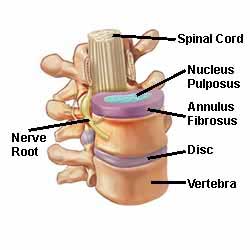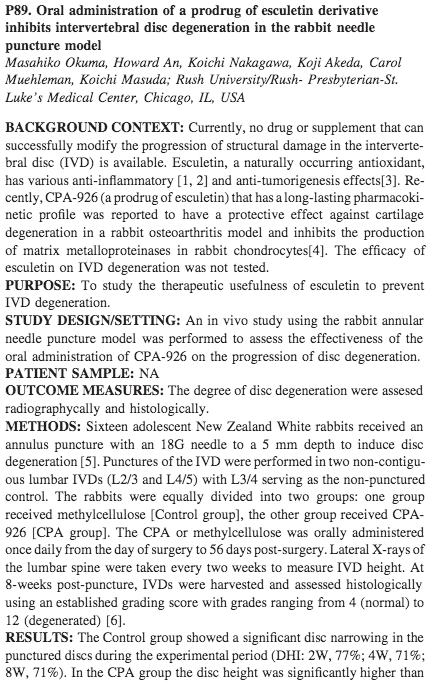This Non-Available Prodrug Taken Orally Helps Older Adults Become Taller
 I am very happy with the results of the former post “This Non-Prescription Supplement Has Been Scientifically Proven To Make You Grow Taller Even With Closed Growth Plates“. The reaction that it received was what I was sort of hoping for and so far, it has had over 50,000+ views already. Since that post was so popular, I wanted to do a 2nd post which shows them another compound which we have found which have a similar ability.
I am very happy with the results of the former post “This Non-Prescription Supplement Has Been Scientifically Proven To Make You Grow Taller Even With Closed Growth Plates“. The reaction that it received was what I was sort of hoping for and so far, it has had over 50,000+ views already. Since that post was so popular, I wanted to do a 2nd post which shows them another compound which we have found which have a similar ability.
This compound is known as a prodrug, which I am not sure how to obtain, taken orally has been shown only on a theoretical basis to increase height in the lab animals. In rats, their body lengths increased in the ways which we desire. From what I personally have read about it, I have about a 60% confidence in its ability to increase height in people who can ever get it. It would work best on adults, those people who are in theirs 30s and beyond. This suggests that this compound would indeed work for people with closed growth plates, or even specifically intended for people with completely ossified epiphyseal cartilage tissue.
So what is 2nd chemical compound which has this ability?
It is called CPA-926.
I first was informed of this particular drug in an article I had cited in one of my previous posts. This particular compound is mentioned in both the books Dynamic Reconstruction of the Spine (by Daniel H. Kim & Frank P Cammisa on pg 384) and Nonfusion Technologies in Spine Surgery. (edited by Marek Szpalsk on pg 53). I will also be referencing the medical reference “Therapeutic Strategies for Modulating the Inflammatory Diseases” edited by Barry M. Weichman but not as much as the other two.
There was also a few articles I had to glance over (notice I used the word glance, and not study) which validated this idea that the prodrug could indeed work.
- Esculetin (dihydroxycoumarin) inhibits the production of matrix metalloproteinases in cartilage explants, and oral administration of its prodrug, CPA-926, suppresses cartilage destruction in rabbit experimental osteoarthritis
- Molecular Therapy of the Intervertebral Disc
It seems that this compound is both anti-tumorogenic and anti-inflammatory, which are always positives for almost any compounds we ever intend to swallow.
The most important study is the one done by Okuma.
 Okuma M, An HS, Nakagawa K, Akeda K, Muehleman C, Masuda K (2005) Oral administration of esculetin prodrug inhibits intervertebral disc degeneration in the rabbit annular needle puncture model. Orthopaedic research society meeting, (p 370)
Okuma M, An HS, Nakagawa K, Akeda K, Muehleman C, Masuda K (2005) Oral administration of esculetin prodrug inhibits intervertebral disc degeneration in the rabbit annular needle puncture model. Orthopaedic research society meeting, (p 370)
This particular article was published in The Spine Journal back in Sept 10, 2004 (volume 4 or 5).
We are not sure if there is a PubMed study link to it but the title of the study is located and scattered around Google just from a quick search.
From a quick look, it seems that even one patent referenced this method on how to treat discs that are degenerating.
For more proof that this idea of inhibiting the loss of disc, we refer to the patent “Method for inhibiting fibrocartilage degradation (WO 2005091960 A2)“ by Koichi Masuda, a director of Orthopaedic Surgery. (His Curriculum VItae is Available Here). I never did look over the patent extensively but did glance over the document to mine a few interesting facts about CPA-926.
- The compound is provided by Kureha Chemical Ind., Co. Ltd., Tokyo Japan or Kureha Chemical Corp
- Following the lateral X-rays of the lumbar spine, the vertebral body height and disc height of the IVDs were measured
- Oral administration of CPA-926 preserved disc height and the histological analyses of these tissues show that CPA- 926 protects against disc degenerative chances in a rabbit model
At this point, it might not be possible to call up the sales people at Kureha and get them to ship a few grams of this cartilage regenerative chemical compound. I haven’t tried it but is only providing evidence of its efficacy.
In terms of how effective this chemical compound could be, it could be similar to Harpagoside, which I wrote about in the old post “Increase Height and Grow Taller Using Harpagoside“
So does this mean that every single compound which has inhibitory effects on compounds which have catabolic effects on cartilage (aka treats osteoarthritis) is good?
If we were to be completely general, I would give a tentative yes to that question. While there is probably a few dozen compounds the drug synthesize makers know of which have abilities to treat diseases associated with articular cartilage degeneration, very few of them have shown the characteristic of doing more than just preventing degradation, but also anabolic effects, where cartilage is regrown back. This prodrug of the chemical compound 6,7-dihydroxycoumarin suggests that it has those anabolic effects besides just the usual inhibition of catabolic processes in the IVDs.
Is it however better than just popping Glucosamine Sulfate?
We are not sure about the comparison but it is obviously harder.
Is it safe to take orally?
From the 3-4 main studies that have talked about this compound, it has been found to be safe on the lab rats and lab rabbits it was tested on.
So we buy this from somewhere?
I have not searched to see whether the Keruha Chemical Corp in Tokyo sells this stuff.
The Inhibitory Effects Of CPA-926 On The MMPs
On multiple posts written by Tyler over the years, he mentions over and over again how the MMPs (aka Matrix Metalloproteinases) are not good for height increase, specifically MMP-9 and MMP-13. My own research supports this opinion. The study by Yamada and even Watanabe (Esculetin suppresses proteoglycan metabolism by inhibiting the production of matrix metalloproteinases in rabbit chondrocytes.) suggests that for esculetin at least and whatever derivatives that is made from it (or a precursor to the compound) shows that the main way these compounds work is by targeting the pathways of the MMPs.
For the Future
I am also looking into three other compounds called RO 32-3555 (aka Trocade), SKI 306X and KHBJ-9B, which seems to have similar properties in being anti-inflammatory and great for prevention of cartilage degeneration. Those reports will be delivered on another day.
